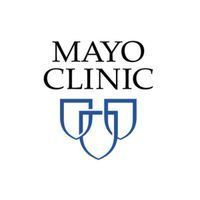
Consumer Health: Stroke Awareness

Understanding the signs and symptoms stroke during National Stroke Awareness Month.
This content is courtesy of Mayo Clinic. To view the original post, click
May is National Stroke Awareness Month, which makes this a good time to learn more about
Stroke is one of the leading causes of death in the U.S. and a major cause of serious disability for adults. More than 795,000 people in the U.S. have a stroke each year, according to the
A stroke occurs when the blood supply to part of your brain is interrupted or reduced, preventing brain tissue from getting oxygen and nutrients. Brain cells begin to die in minutes. A stroke is a medical emergency, and prompt treatment is crucial. Early action can reduce brain damage and other complications.
The two main causes of stroke are a blocked artery, which causes an
Signs and symptoms of stroke include:
- Trouble speaking and understanding what others are saying
You may be confused, slur your words or have difficulty understanding speech. - Paralysis or numbness of the face, arm or leg
You may develop sudden numbness, weakness or paralysis in your face, arm or leg. This often affects just one side of your body. Try to raise your arms over your head at the same time. If one arm begins to fall, you may be having a stroke. Also, one side of your mouth may droop when you try to smile. - Problems seeing in one or both eyes
You may suddenly have blurred or blackened vision in one or both eyes, or you may see double. - Headache
A sudden, severe headache, which may be accompanied by vomiting, dizziness or altered consciousness, may indicate that you're having a stroke. - Trouble walking
You may stumble or lose your balance. You also may have sudden dizziness or loss of coordination.
It's important to recognize the warning signs of stroke because prompt treatment is crucial to minimize brain damage and potential complications. To recognize the signs of stroke, remember the acronym
- Face
Does the face droop on one side when the person tries to smile? - Arms
Is one arm lower when the person tries to raise both arms? - Speech
Can the person repeat a simple sentence? Is speech slurred or hard to understand? - Time
During a stroke every minute counts. If you observe any of these signs, call 911 or your local emergency number immediately.
Emergency
Most stroke survivors go to a
Newsletter
Keep your finger on the pulse of neurology—subscribe to NeurologyLive for expert interviews, new data, and breakthrough treatment updates.




















